
Barksdale Air Force Base is a United States Air Force base in northwest Louisiana, United States, in Bossier Parish. It is contiguous to Bossier City, Louisiana, along the base's western and northwestern edge. Barksdale Air Force Base occupies more than 22,000 acres (89 km2) east of Bossier City and along the southern edge of Interstate 20. More than 15,000 active-duty and Air Force Reserve members serve at Barksdale.
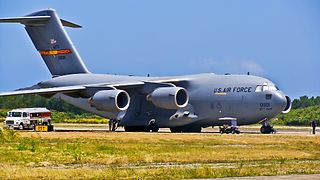
The 97th Air Mobility Wing is a United States Air Force (USAF) unit assigned to Nineteenth Air Force of Air Education and Training Command. It is stationed at Altus Air Force Base, Oklahoma. The wing is also the host unit at Altus. It plans and executes McDonnell Douglas C-17 Globemaster III, Boeing KC-46, and Boeing KC-135 Stratotanker pilot and aircrew training, providing formal school initial and advanced specialty training programs for up to 3,000 students annually. The training is done in a three-phase approach: Academic Phase, Simulator Phase, and Flying Phase.

The 93d Air Ground Operations Wing is a United States Air Force unit assigned to Air Combat Command, Ninth Air Force. It is stationed as a tenant unit at Moody Air Force Base, Georgia.

The 7th Air Division served the United States Air Force with distinction from early 1944 through early 1992, earning an outstanding unit decoration and a service streamer along the way.

The 320th Air Expeditionary Wing is a provisional United States Air Force unit assigned to the Air Force District of Washington. It is stationed at Bolling AFB, District of Columbia. The 320 AEW may be activated or inactivated at any time.
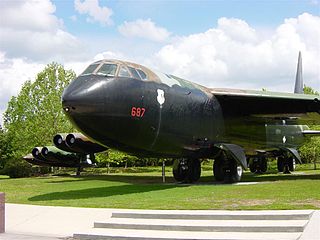
The 306th Strategic Wing, previously the 306th Bombardment Wing, is an inactive United States Air Force unit. It was last assigned to the Strategic Air Command at RAF Mildenhall, Suffolk and was inactivated on 1 February 1992. The wing's mission was to coordinate all SAC air refueling and reconnaissance resources in the European Theater with the United States Air Forces in Europe (USAFE). It assumed the mission of the 98th Strategic Wing when that unit was inactivated in 1976.

The 512th Rescue Squadron is part of the 58th Special Operations Wing based at Kirtland Air Force Base, New Mexico. It operates Bell UH-1N Twin Huey and Sikorsky HH-60G Pave Hawk helicopters training aircrew conducting search and rescue missions.

The 823d Air Division is an inactive United States Air Force organization. Its last assignment was with Strategic Air Command (SAC)'s Second Air Force at McCoy Air Force Base, Florida, where it was inactivated on 30 June 1971.

The 817th Air Division is an inactive United States Air Force organization. Its last assignment was with Strategic Air Command, assigned to Second Air Force, at Pease Air Force Base, New Hampshire, where it was inactivated on 30 June 1971.
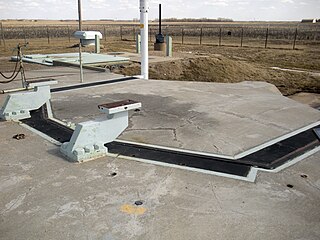
The 810th Strategic Aerospace Division is an inactive United States Air Force organization. Its last assignment was with Strategic Air Command (SAC), assigned to Fifteenth Air Force at Minot Air Force Base, North Dakota, where it was inactivated on 30 June 1971.
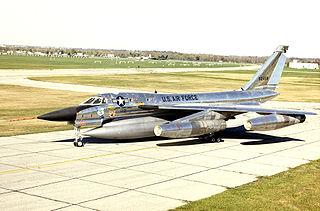
The 825th Strategic Aerospace Division is an inactive United States Air Force organization. Its last assignment was with Strategic Air Command (SAC), assigned to Second Air Force at Little Rock Air Force Base, Arkansas, where it was inactivated on 1 January 1970.

The 816th Strategic Aerospace Division is an inactive United States Air Force organization. Its last assignment was with Second Air Force at Altus Air Force Base, Oklahoma, where it was inactivated on 1 July 1965.

The 2d Bombardment Squadron is an inactive United States Air Force unit. Its last assignment as a Boeing B-52 Stratofortress squadron was with the Strategic Air Command 22d Bombardment Wing stationed at March Air Force Base, California. It was inactivated on 1 October 1982. The unit was redesignated as the 2d Strategic Squadron as a Boeing KC-135 Stratotanker rotational squadron with the 306th Strategic Wing and was last active at RAF Mildenhall, England in 1992.

The 528th Bombardment Squadron is an inactive United States Air Force unit. It was last assigned to the 380th Bombardment Wing at Plattsburgh Air Force Base, New York, where it was inactivated on 1 July 1991.

The 441st Air Expeditionary Squadron is a provisional United States Air Force unit. It was converted to provisional status in May 2011.
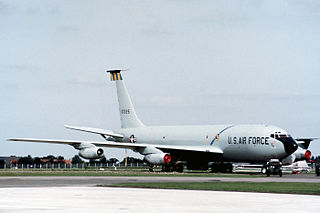
The 42d Air Refueling Squadron is an inactive United States Air Force unit. It was last assigned to the 42d Bombardment Wing at Loring Air Force Base, Maine, where it was inactivated on 30 April 1994.

A minimum interval takeoff (MITO) is a technique of the United States Air Force for scrambling all available bomber and tanker aircraft at twelve- and fifteen-second intervals, respectively. Before takeoff, the aircraft perform an elephant walk to the runway. It is designed to maximize the number of aircraft launched in the least amount of time possible before the base suffers a nuclear strike, which would obliterate all remaining aircraft.
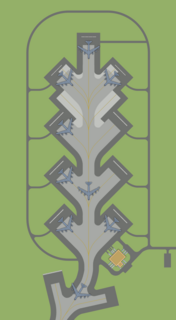
A mole hole, officially designated the Readiness Crew Building (RCB), is a type of structure built by the United States Air Force at former Strategic Air Command (SAC) bases around the country during the 1950s and 1960s. RCBs were located adjacent to an Alert Ramp, also called a "Christmas Tree", where Ready Alert aircraft were parked. These aircraft were initially Boeing B-47 Stratojet aircraft armed with nuclear weapons, augmented by Boeing KC-97 Stratofreighter aerial refueling aircraft. As SAC introduced newer bomber and aerial tanker aircraft into its inventory, the B-47 and KC-97 were later superseded by Boeing B-52 Stratofortress, Convair B-58 Hustler, General Dynamics FB-111 or Rockwell B-1 Lancer bombers, augmented by Boeing KC-135 Stratotanker or McDonnell Douglas KC-10 Extender aerial refueling aircraft.
The Loring Air Force Base Alert Area is a former alert area for B-52 Stratofortress aircraft of the 42d Bombardment Wing situated at the former Loring Air Force Base at Limestone, Maine. It was constructed in 1960 due to a demand by the Strategic Air Command that its bomber bases have a staging area to launch alerts from.
In the armed forces, most often in military aviation and in land-based missile forces, an alert crew is a group of members of units and formations that maintains a group level of combat readiness. Although it sometimes encompasses the entire unit, today the term is more used for a set group of individuals.


















